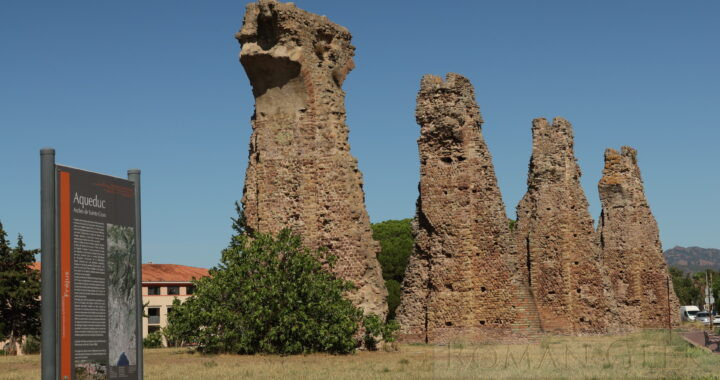- Frejus is a port town located in the Provence-Alpes-Cote d’Azur Region of southeastern France. It is second only to Arles for having the greatest concentration of Roman Monuments.
- It was known to the Romans as Forum Julii, the Roman Port of Claustra Maris (Sea Bolt) a Roman Naval Base with a Hexagonal Harbour, located in the Province of Gallia Narbonensis.
History
- Pliny the Elder referred to Frejus as ‘Forum Julii Octavanorum Colonia quae Pacensis appellatur et Classica’, meaning the Colony of Forum Julius Octavian is called Pacensis et Classica (meaning Fleet)’.
- The Town and harbour were named Forum Julii and Claustra Maris by Julius Caesar probably during or after his Siege of Massilia in 49 BCE, when Caesar wanted to establish a reliable alternative to Marseille.
- Between 29-27 BCE, Augustus created three major naval bases: the Classis Misenensis at Misenum, the Classis Ravennas at Ravenna and a base at Forum Julii (Frejus) in Gaul (Fleet name unknown).
- Augustus made Forum Julii the only Roman Naval port in southern Gaul, to which he relocated the defeated galleys which he had taken after winning the Battle of Actium (31 BCE) against Mark Anthony and Cleopatra.
- Forum Julii had a hexagonal harbour, similar to the later hexagonal harbour at Portus in Italy.
- At the same time he settled the veterans of the Legio VIII Augusta at Forum Julii.
- Later, Tiberius (14-37 CE) constructed an Aqueduct, Amphitheatre, Roman Baths, a Theatre and a Lighthouse. The enclosing walls are over 2 miles (3.7 km) long.
- Agricola (40-93 CE), the Commander who participated in the Roman Conquest of Britannia, was born here.
Roman Sites
-
- The Roman Sites are distributed at random around Frejus and take time to get from one site to another.
- The Tourist Office in Rue Jean Jaures has a map with their locations.
- Frejus Roman Amphitheatre
- Built in the 1st century CE, it had seating for 10,000 spectators.
- The Amphitheatre has been reconstructed with modern seating and is used for performances.
- Frejus Roman Theatre
- The theatre has also had modern seating constructed over the Roman seating and is used for performances.
- Frejus Roman Aqueduct (Parc du Chateau Aurelian)
- The aqueduct ran from its source, the Neissoun Spring at Siagnole near Mons, for 26 miles (42km), of which 22 miles (36km) were in a covered conduit.
- The remainder was carried on arches or walls. Some of the arches are visible on the Voie d’Aurelian.
- After restoration works during the 19th century, the aquueduct again supplies water to Frejus today.
- Frejus Roman Lighthouse
- This building resembles a Roman lighthouse but is not in fact a lighthouse. However, during the Roman Period, Frejus did have three Roman lighthouses.
- Roman Walls
- The Walls ran a circuit of 2 miles (3.7 km) around the town.
- They are still intact along the Rue Joseph Aubenas.
Museums
- Archeological Museum of Frejus
- Located behind the Cathedral, the museum houses artefacts from the Roman period in four main rooms.
- Saint-Raphael Archeological Museum
- The museum holds a collection of Roman artefacts found in the nearby Dramont Shipwrecks.
Roman Roads
Photo and Map: Frejus Aqueduct

